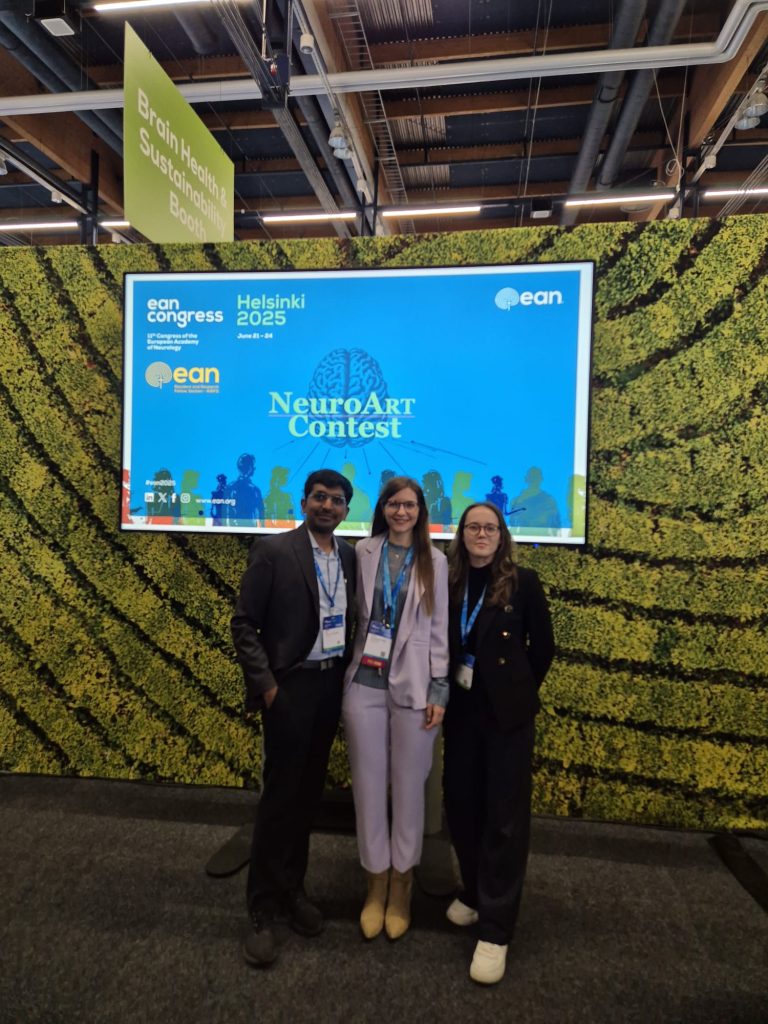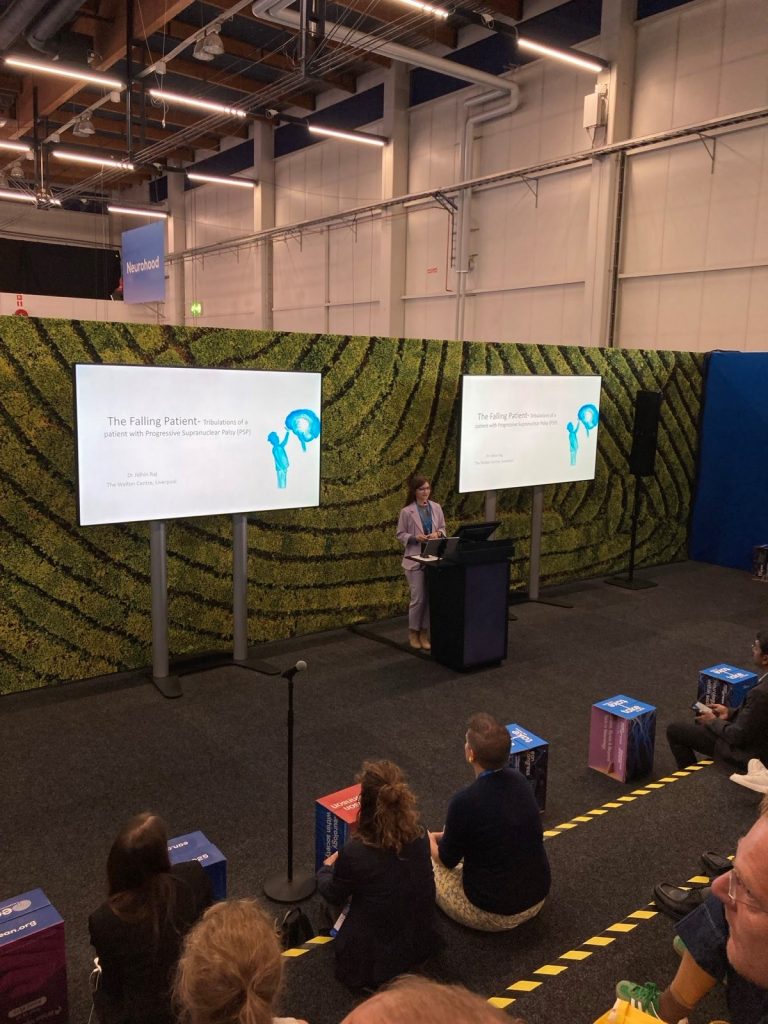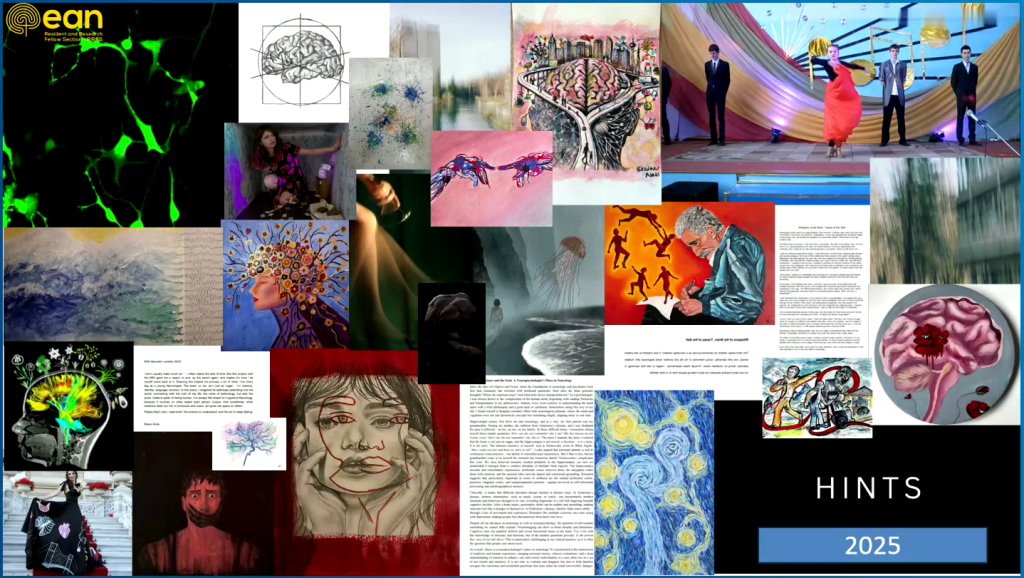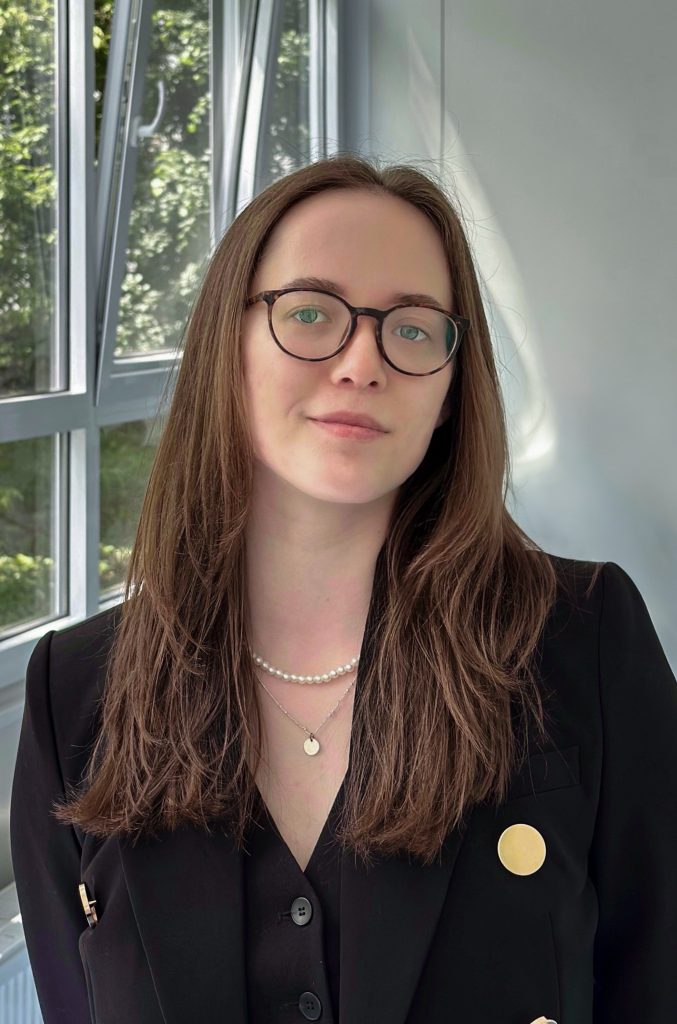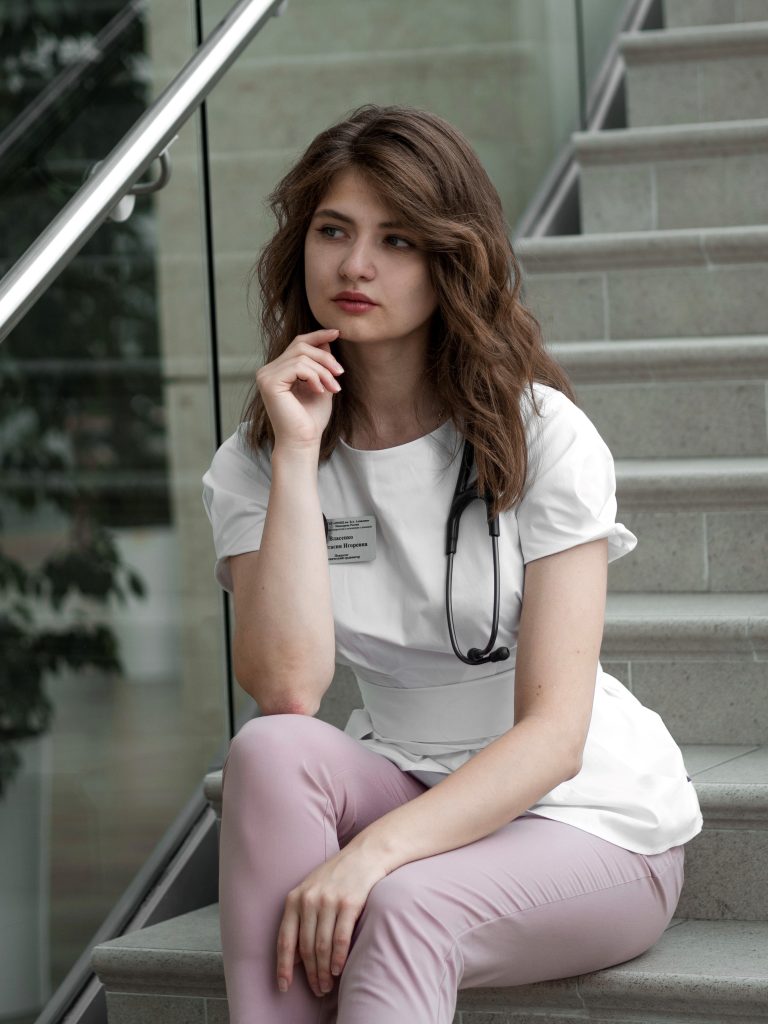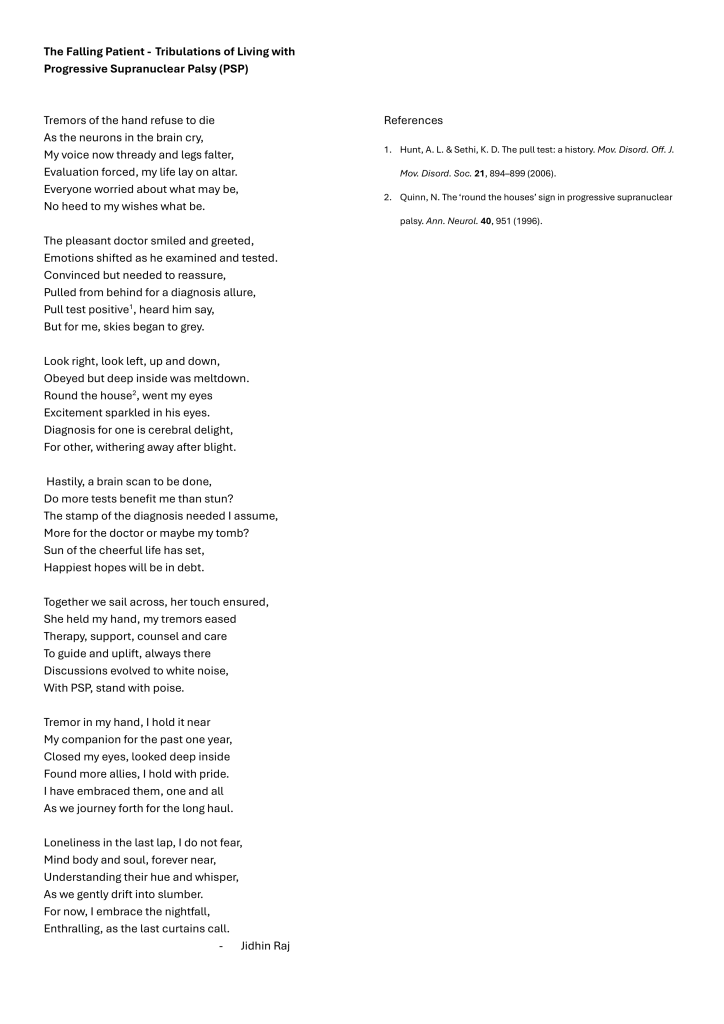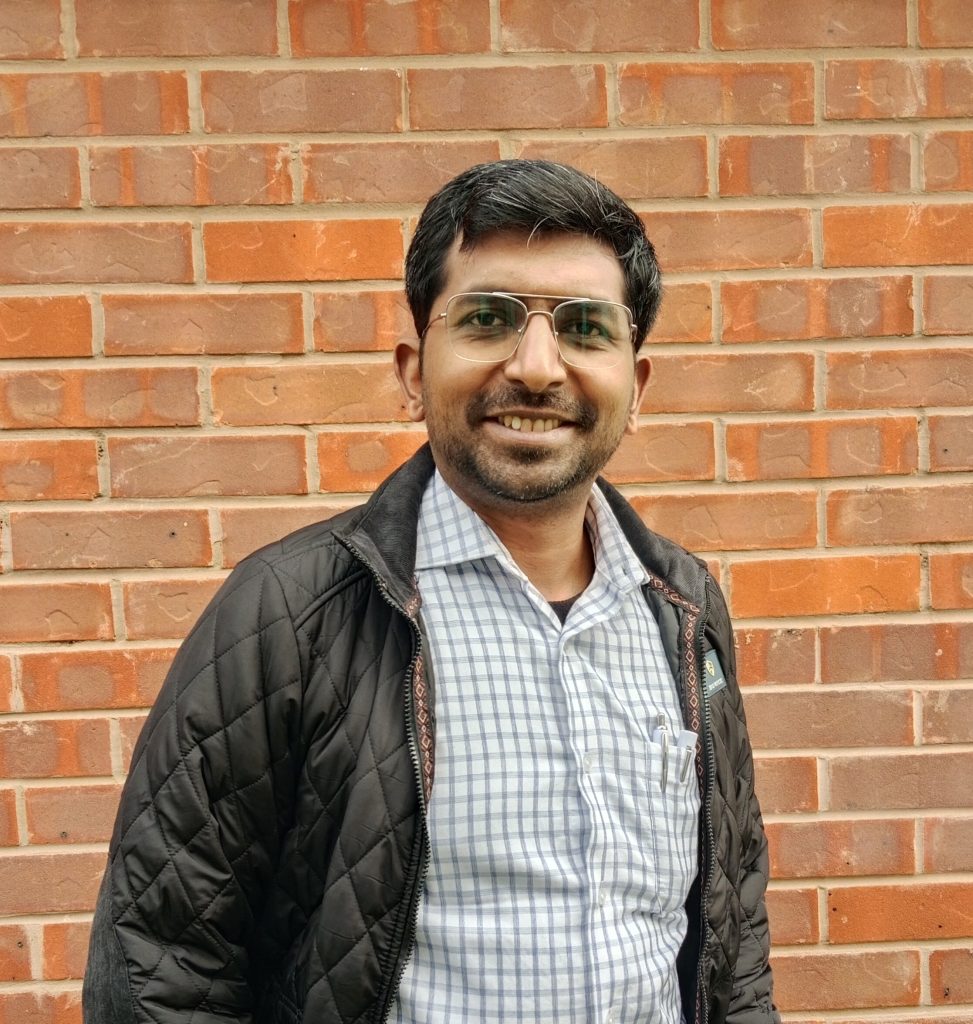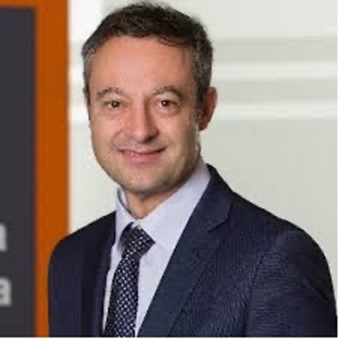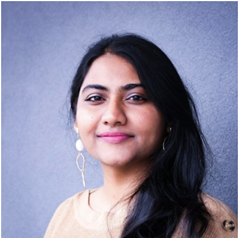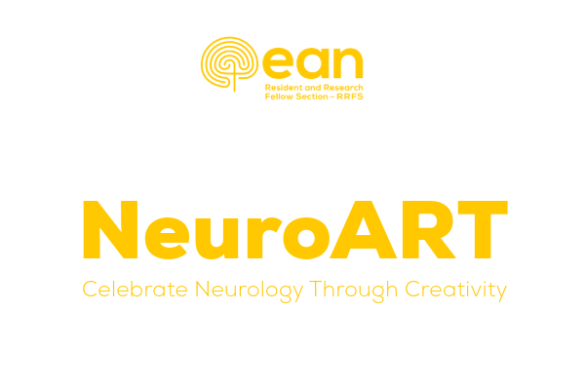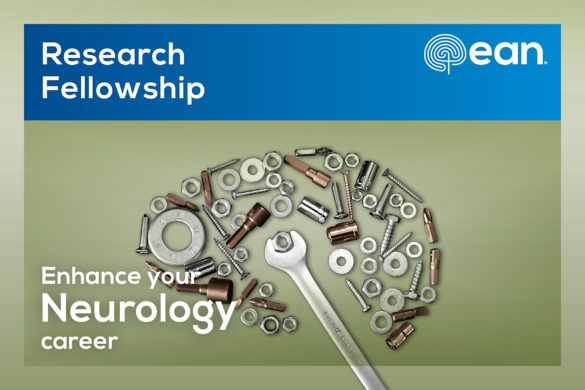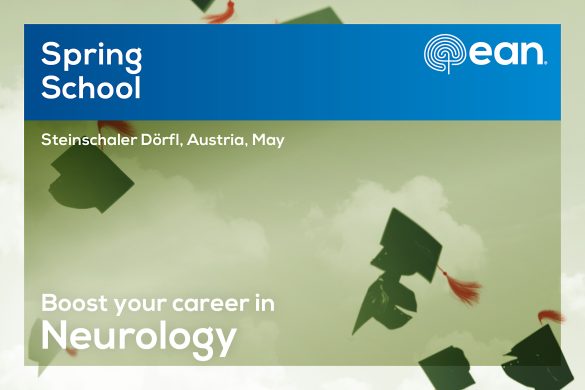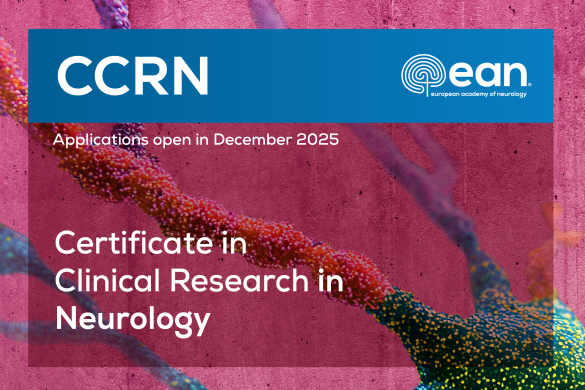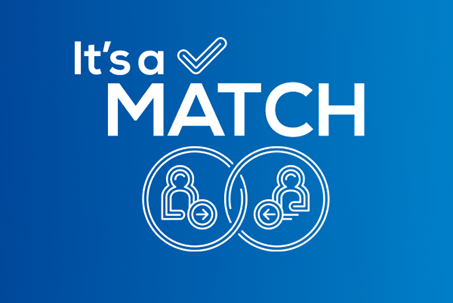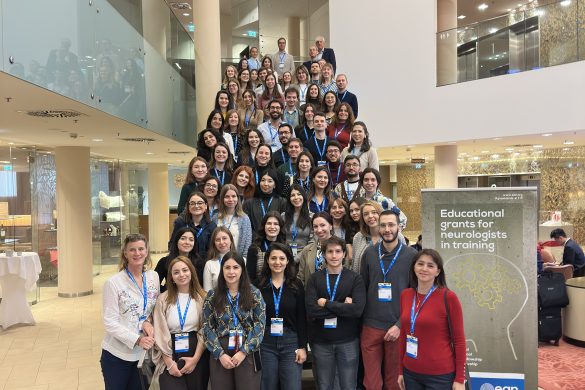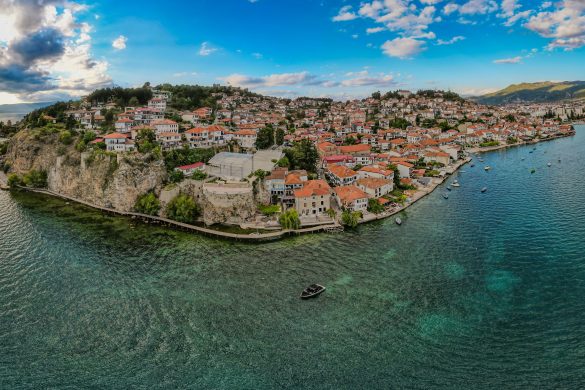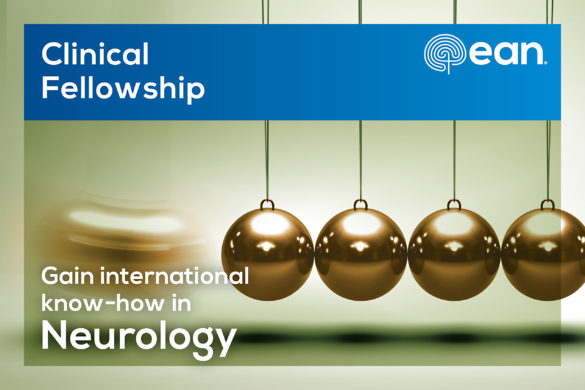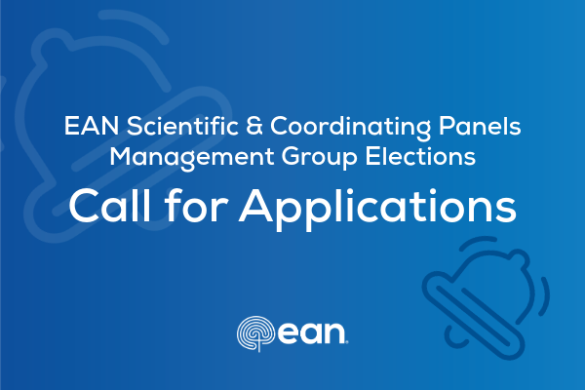by Alicia González Martínez, Resident and Research Fellow Section (RRFS) Chair, on behalf of the EAN RRFS Office
This year the EAN Resident and Research Fellow Section celebrated the second edition of the NeuroART competition, which concluded with an engaging exhibition of artistic talent from the neurology community at the EAN Congress 2025 in Helsinki, and for the first time the winners presented their artwork at the Scientific Theatre during the congress.
Overview of the Competition
Once more the RRFS invited its members to participate in the NeuroArt Competition, which featured three exciting categories: Music, Dance, and Video; Photography and Painting; and Poetry and Short Essays. The competition sought to blend the realms of art and neurology, inviting participants to explore and express their understanding of neuroscience through various artistic media. We are excited to share that student members will be invited to participate next year!
NeuroART Winners
Ecaterina Postovoi – Awarded in the category ‘Music, Dance, and Video’
The HINTS examination is crucial for evaluating patients with acute vertigo or dizziness in the emergency department. This simple, low-cost test is more sensitive than conventional neuroimaging in distinguishing stroke from acute vestibular syndrome (AVS). With 100% sensitivity and specificity between 90% and 94.4%, HINTS outperforms CT, which may miss 60% of early strokes, and even MRI, which can fail to detect small brainstem or cerebellar lesions within 48 hours.
In my practice, I frequently see patients with sudden-onset dizziness, sparking my interest in improving diagnostic accuracy. HINTS helps determine whether dizziness is of peripheral or central origin, enabling faster treatment decisions and reducing early reliance on imaging. Its ease of use in neurology clinics and hospitals can enhance early diagnosis and reduce disability.
The entire video was filmed using the Snorricam effect to realistically capture the patient’s dizziness, enhancing symptom recognition.
Ecaterina Postovoi is a second-year neurology resident at the State University of Medicine and Pharmacy Nicolae Testemiţanu, Republic of Moldova, currently training at the Diomid Gherman Institute of Neurology and Neurosurgery. Her main fields of interest include neuro-otology, stroke, movement disorders, and multiple sclerosis. Ecaterina has participated in regional teaching courses in Tbilisi, Porto, and Chișinău, and has authored several abstracts addressing diagnostic challenges in vestibular disorders. In addition to her clinical and academic activities, she is actively involved in promoting neurological education and awareness in her country.
Anastasia Igorevna Vlasenko – Awarded in the category ‘Photography and Painting’
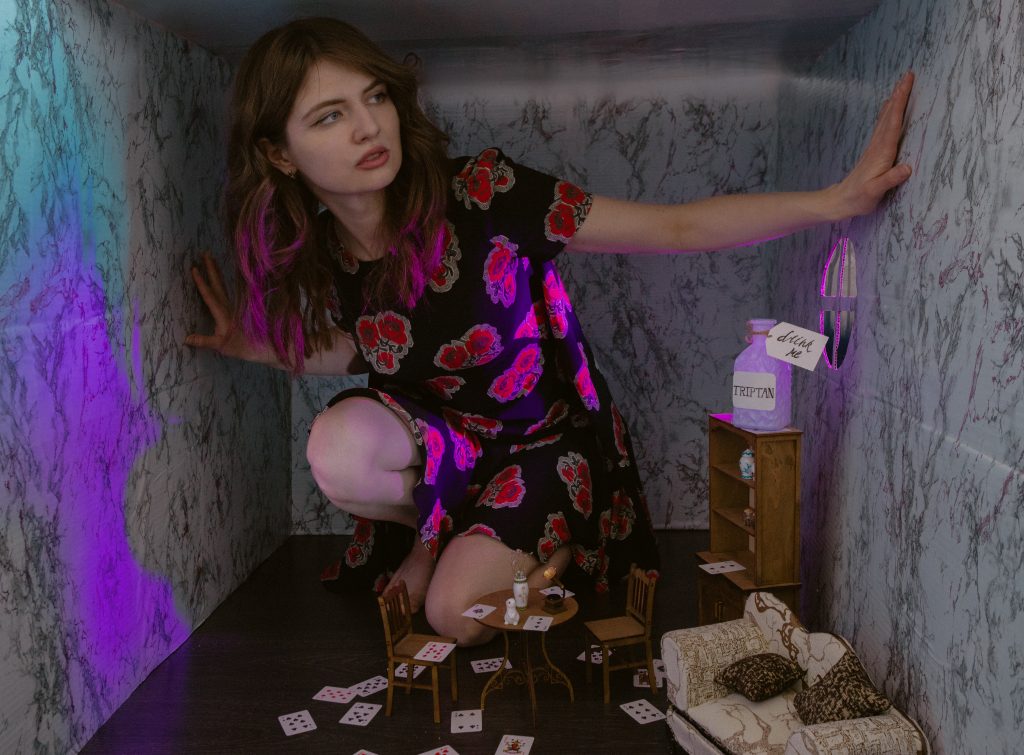
Anastasia Vlasenko’s winning photograph, ‘AIWS’
“She ate a little bit, and said anxiously to herself, ‘Which way? Which way?’, holding her hand on the top of her head to feel which way it was growing” — Lewis Carroll, Alice’s Adventures in Wonderland
This photograph is inspired by Alice in Wonderland Syndrome (AIWS). AIWS is a rare neurological syndrome characterised by distorted perception, especially of body size and space. It emerges as a frequent lifetime symptom in migraine patients. The viewer is invited to look at the world with the eyes of a person who experiences migraine attacks. Dollhouse furniture was used for visualising the surreal feeling of being “too big”. The bottle with the inscription “drink me” containing a triptan symbolizes both a fairy tale element and a real-life treatment that can stop the migraine attack. The presence of the rabbit, playing cards complements the references to Carroll’s tale. All together are combining fiction
and neuroscience.
Anastasia Vlasenko is a recently graduated neurologist at Almazov National Medical Research Centre (NMRC), Ministry of Health of the Russian Federation. Her scientific interests include neurogenetics and neuromuscular disorders and she is the author and co-author of ten scientific publications and one monograph.
Jidhin Raj – Awarded in the category ‘Poetry and Short Essays’
This poem deals with the thoughts and tribulations of a patient through the symptoms, diagnosis, and acceptance of neurodegenerative diseases like PSP. It also highlights the emotional journey of the patient from fear to strength and finally the patient has made peace with it. The poem also highlights the contrast between the doctor’s clinical excitement to patient’s quiet devastation.
Jidhin Raj – The Falling Patient
“I am currently working as a Clinical Fellow at The Walton Centre in Liverpool, with a special interest in movement disorders. I completed my neurology training in India, and my journey in neurology has been deeply shaped by the stories and struggles of the patients I’ve met along the way. Outside of work, I enjoy reading, writing, and swimming. This poem is very close to my heart—it captures my reflections on the thoughts and tribulations of a patient receiving a life-changing diagnosis.”
The winners were selected for their outstanding contributions, creativity, and ability to encapsulate complex neurological concepts through their art. Their works not only reflect their artistic prowess but also their deep understanding and passion for neurology. The winners received a travel grant and were invited to present their work at the Scientific Theatre at the 11th EAN Congress in Helsinki 2025.
Significance of the Competition
The NeuroArt competition serves as a unique platform for young neurologists, neuroscientists, and residents to engage with their field in a creative and reflective manner. By encouraging the integration of art and science, the competition aims to foster a holistic appreciation of neurology, promote mental well-being, and enhance public understanding of neurological research.
This competition not only provides a creative outlet for participants but also aims to communicate complex neurological ideas in an accessible and engaging manner. The successful conclusion of this year’s competition highlights the vibrant intersection of art and science and the significant role that creative expression can play in advancing both personal and professional growth within the neurology community.
For more detailed information about the competition and future events, you can visit the official EAN NeuroART competition page.
Keep an eye on next year’s competition for another opportunity to showcase your creative talents and contribute to the growing community of NeuroARTists. All RRFS and Student members are welcome to submit their artwork!
NeuroArt Jury
Dr Jesús Porta-Etessam
President of the Spanish Society of Neurology (SEN), Neurologist,
Madrid, Spain. Fellow of the European Academy of Neruology.
Head of the Neurology Department, Fundación Jiménez Díaz, Madrid, Spain. Founder of ‘Art and the butterflies of the soul’ art and neurology project, Associate Professor of Neurology at the Autonomous University of Madrid.
Dr Radhika Patnala PhD
CEO, Endosymbiont
Visual Science Communication and Design Experts for Biotech Neuroscientist
Munich, Germany
Dr Radhika Patnala, a neuroscientist, and the Founder of Sci-Illustrate and Endosymbiont, leads teams to solve design and communication problems for biotech and pharma, while striving to bridge the line between science, art and design. She has served as an Individual Specialist with UNESCO and the co-curator of the Creative Resilience global sci-art exhibit. Her work on COVID-19 communications has been featured by the BBC, and she has been a keynote speaker at the World Health Organization global conference on communicating science during health emergencies.
Sloka Iyengar, PhD
Neuroscientist, Adjunct professor at St. Joseph’s University
Philadelphia, USA
Dr Iyengar is a neuroscientist and practitioner of a traditional Indian dance form called Bharatanatyam, and is passionate about relieving suffering through the sciences and the arts. She curates a forum called Vichaar (the Sanskrit word means ‘thought’ or ‘contemplation’) that explores the points of intersection between the arts and the sciences. She has used Bharatanatyam to present topics such as the impacts of caregiving on the brain; learning, teaching, and pedagogy; and the neural mechanisms of error detection. You can find more about her at https://www.slokaiyengar.net/.
